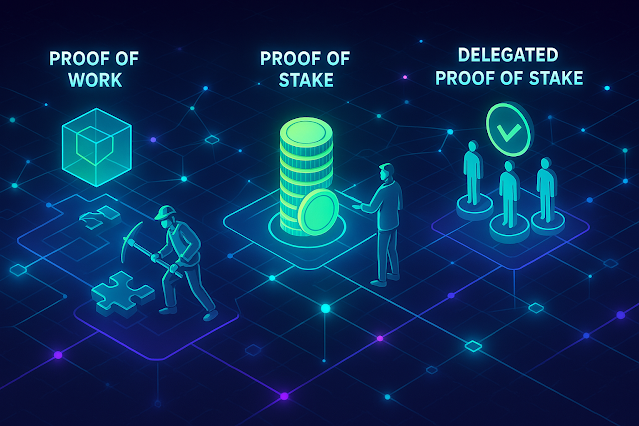Blockchain technology has revolutionized the way digital transactions are conducted, recorded, and verified. At the core of every blockchain lies a critical process known as the consensus mechanism—the system that allows all participants in a decentralized network to agree on the state of the blockchain without a central authority. Whether you're a casual crypto enthusiast or an aspiring blockchain developer, understanding how consensus mechanisms work is essential to grasping the foundations of blockchain.
What is a consensus mechanism?
A consensus mechanism is a protocol used by blockchain networks to achieve agreement among distributed nodes on a single version of the truth. Since there’s no central server or authority, the network must rely on consensus algorithms to ensure that all transactions are valid and no double-spending occurs.
Different blockchains use different consensus mechanisms depending on their goals—such as security, speed, scalability, and energy efficiency.
The most common types of consensus mechanisms
Let’s explore the most widely used consensus algorithms in blockchain today:
1. Proof of Work (PoW)
How it works:
Miners compete to solve complex mathematical problems. The first to solve the problem gets the right to add a new block to the blockchain and is rewarded with cryptocurrency.
Used by: Bitcoin, Litecoin
Pros:
-
Highly secure
-
Proven technology
Cons:
-
Energy intensive
-
Slower transaction speed
2. Proof of Stake (PoS)
How it works:
Validators are chosen based on the number of coins they “stake” or lock up as collateral. The more coins staked, the higher the chance to be selected to validate the next block.
Used by: Ethereum (after The Merge), Cardano, Polkadot
Pros:
-
Energy-efficient
-
Faster transactions
Cons:
-
Potential for wealth centralization (the rich get richer)
3. Delegated Proof of Stake (DPoS)
How it works:
Token holders vote for a small number of trusted delegates who are responsible for validating transactions and maintaining the network.
Used by: EOS, TRON
Pros:
-
High speed and scalability
-
More democratic than PoS
Cons:
-
Risk of centralization
-
Governance can be politically influenced
4. Proof of Authority (PoA)
How it works:
Validators are pre-approved and trusted entities. Consensus is reached through a small group of known, reputable nodes.
Used by: VeChain, POA Network
Pros:
-
Extremely fast
-
Low energy consumption
Cons:
-
Not fully decentralized
-
Relies on trust in known authorities
5. Practical Byzantine Fault Tolerance (PBFT)
How it works:
Originally designed to deal with faulty or malicious nodes in a distributed network. All honest nodes agree on the same block through a series of message exchanges.
Used by: Hyperledger Fabric, Zilliqa
Pros:
-
Fault tolerant
-
Good for private networks
Cons:
-
Less scalable for large public blockchains
-
Complex coordination
Why consensus mechanisms matter
The choice of a consensus algorithm affects a blockchain’s security, decentralization, energy use, scalability, and transaction speed. For example:
-
Bitcoin favors security through PoW but sacrifices speed and energy efficiency.
-
Ethereum’s shift to PoS reflects the growing demand for sustainability and speed.
For investors and users, understanding these mechanisms can help evaluate which blockchain projects are more likely to succeed long-term.
What's next for consensus mechanisms?
As blockchain evolves, new hybrid models and experimental algorithms (like Proof of History, Proof of Burn, or Proof of Space and Time) are being developed. These aim to strike a better balance between decentralization, efficiency, and security.
Consensus is not just a technical detail—it's the backbone of blockchain’s trustless ecosystem. Choosing the right mechanism is vital for the future of decentralized applications, finance, and governance.
Investment insight and disclaimer
While understanding consensus mechanisms can guide your research, investing in cryptocurrency remains highly speculative. Always do your own due diligence, diversify your investments, and never invest more than you can afford to lose.
Disclaimer: This article is for educational purposes only. It does not offer financial advice or investment recommendations. The website and its authors are not responsible for any financial losses or decisions made based on the information provided.

Comments
Post a Comment